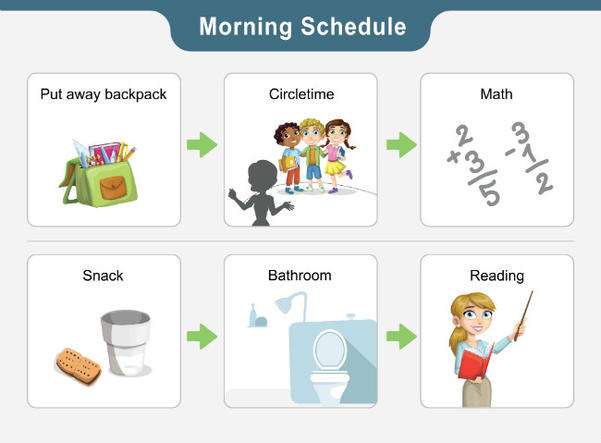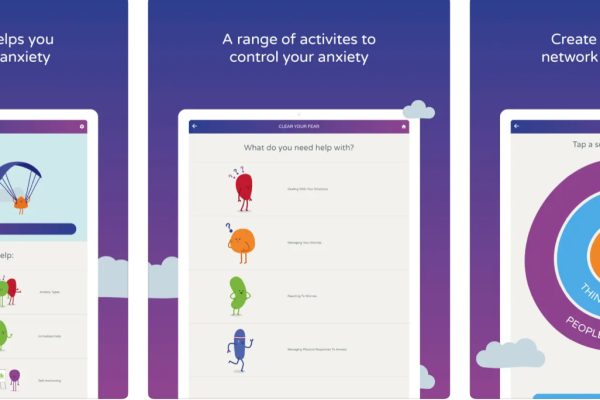
Eleven ways visual schedules can help your child
Visual schedules can have such a significant impact on your daily life as a parent to a child with a disability.
A visual schedule is a daily routine created by parents or teachers, put up in a place where the child can see it. By outlining the plans for the day, visual schedules can assist by curbing meltdowns and smoothing out the day to day routine.
There are so many benefits to incorporating visual schedules into your child’s school and home life. Here are 11 reasons to make them a part of your every day routine
They support literacy development
By incorporating pictures of the tasks included, such as brushing teeth, visual schedules aid in the recognition of words, comprehension and the relationship between words and pictures. Pictures make it a visually pleasing tool and make it easier to get your child invested in the daily processes.
They reinforce verbal instructions
Many special needs children struggle with verbal instructions. The visual schedule can reinforce your instructions, without you unnecessarily repeating yourself.
They teach responsibility and planning
Visual schedules allow kids to help plan out their day. They can work with their parents and teachers to build the routine, helping develop their planning and sequencing skills. They may also develop the ability to move on to the next activity on the schedule after completing the previous one. If required, tasks can be broken down into smaller steps to assist with the mastery of basic skills.
They remove emotional response and provide structure
Visual schedules remove the option of negotiation, making day to day life more of a series of expectations, as opposed to emotional desires. Rather than repeating yourself and getting frustrated, there is a neutral source outlining the expectations. Your child’s independence is enhanced if they are able to use the schedule to remind them of their daily tasks.
They make transition easier
Children with autism especially tend to thrive on routine, experiencing difficulties with transitions or changes to what’s expected. Having a visual schedule up in plain sight, both at home and at school, means your child will know what time certain things will happen. This can help to reduce meltdowns and struggles about moving to the next task.
They increase flexibility
Life happens and changes in the daily routine will occur. Having a visual schedule can be a great way to encourage some flexibility within your child. By making changes clear on the visual schedule, you can help prepare your child to be flexible with a new activity.
They educate about time and sequence
Children often struggle with the abstract concepts of time. Visual schedules can be used to teach ideas such as first, next, last or before and after. Once your child starts to understand what these time lapses mean, it can help to minimise tantrums and meltdowns led by their emotions.
They encourage healthy habits
By activating their visual learning skills through using images of their day, kids can start to understand more and cooperate better. The familiarity of their day can also help improve their memory and independence. A visual schedule has the ability to increase security and stability for a child with special needs.
They reduce anxiety
Visual schedules can help reduce anxiety as they clearly outline what’s happening next. If you’re a teacher or parent and have a child who constantly asks questions, it can be because they’re anxious about what’s coming. A schedule allows them to check their own routine instead of checking with you. With reduced anxiety, they can better focus on the task at hand.
They build self esteem
Visual schedules provide children with the opportunity to develop responsibility and independence. As a by-product, their self-esteem can also be strengthened. By checking things off on the visual schedule, they can see their progress and feel a sense of achievement.
They can be referenced throughout the day
This is particularly important in a school context, where your child’s teacher may have many students to attend to. Having a permanent visual schedule in the classroom means it can be checked as needed throughout the day.
If you don’t already incorporate visual schedules into your child’s school and home life, consider doing so. There are so many benefits for them and for your whole family.







